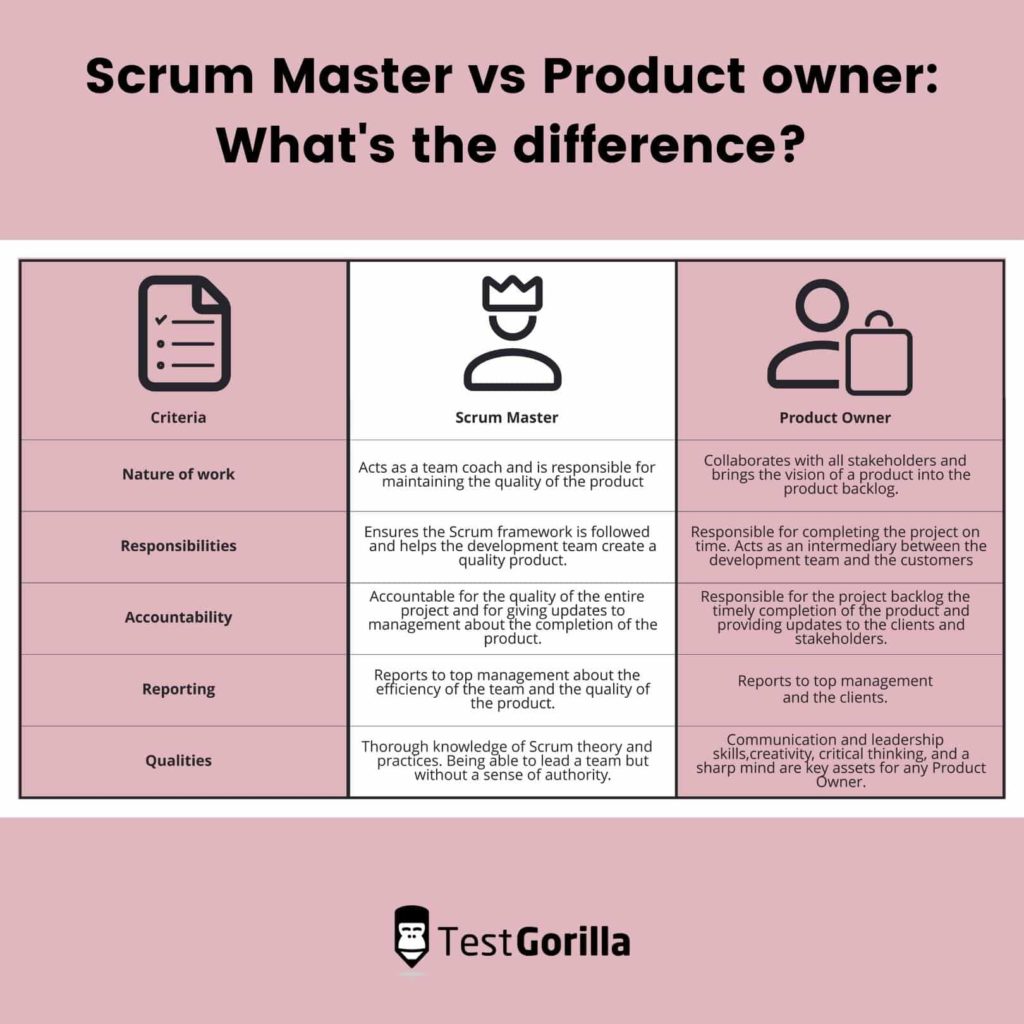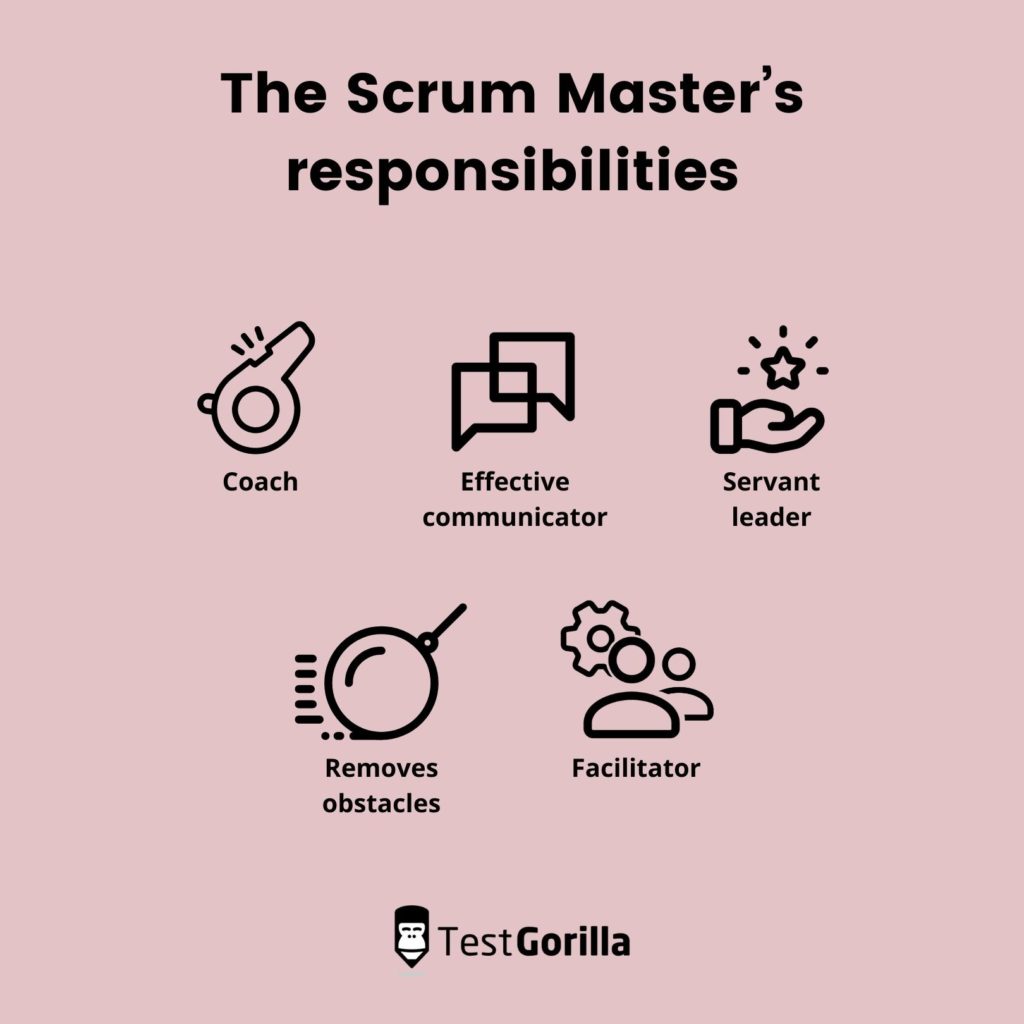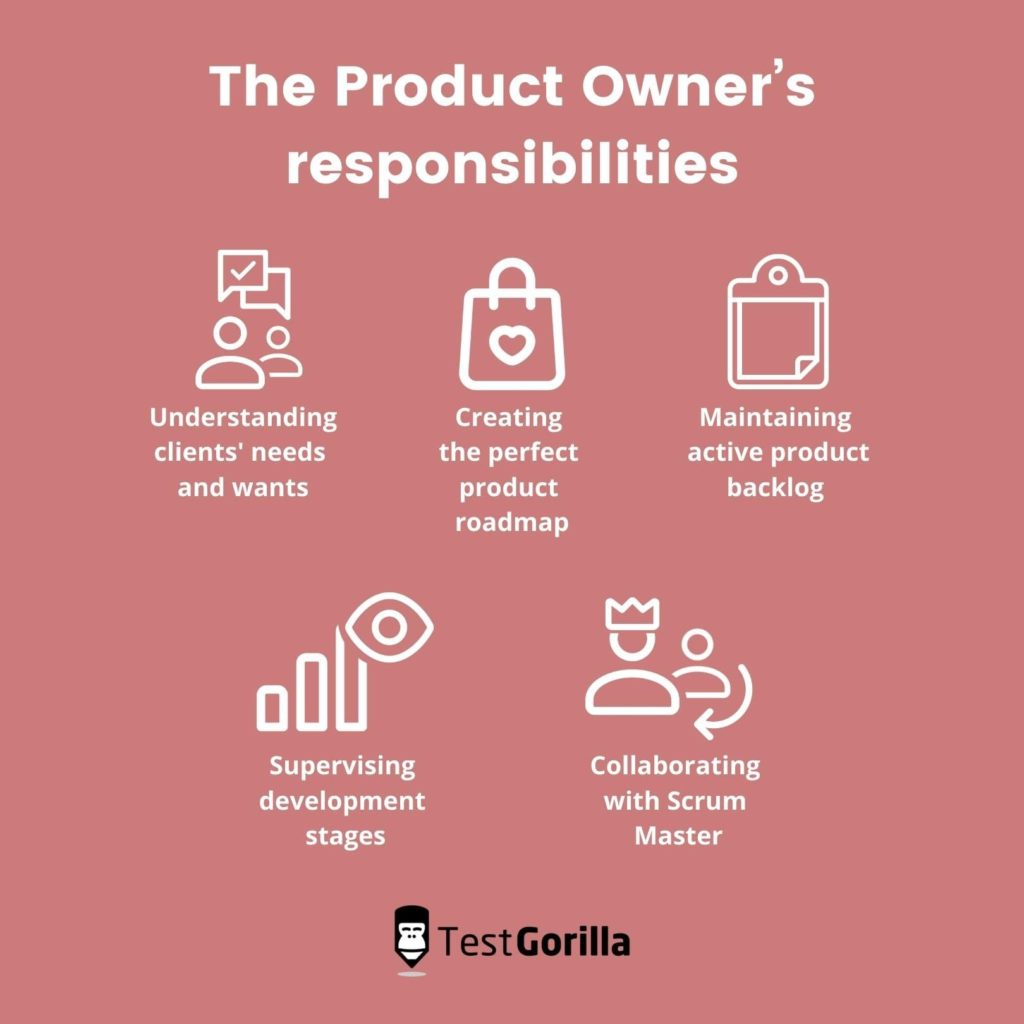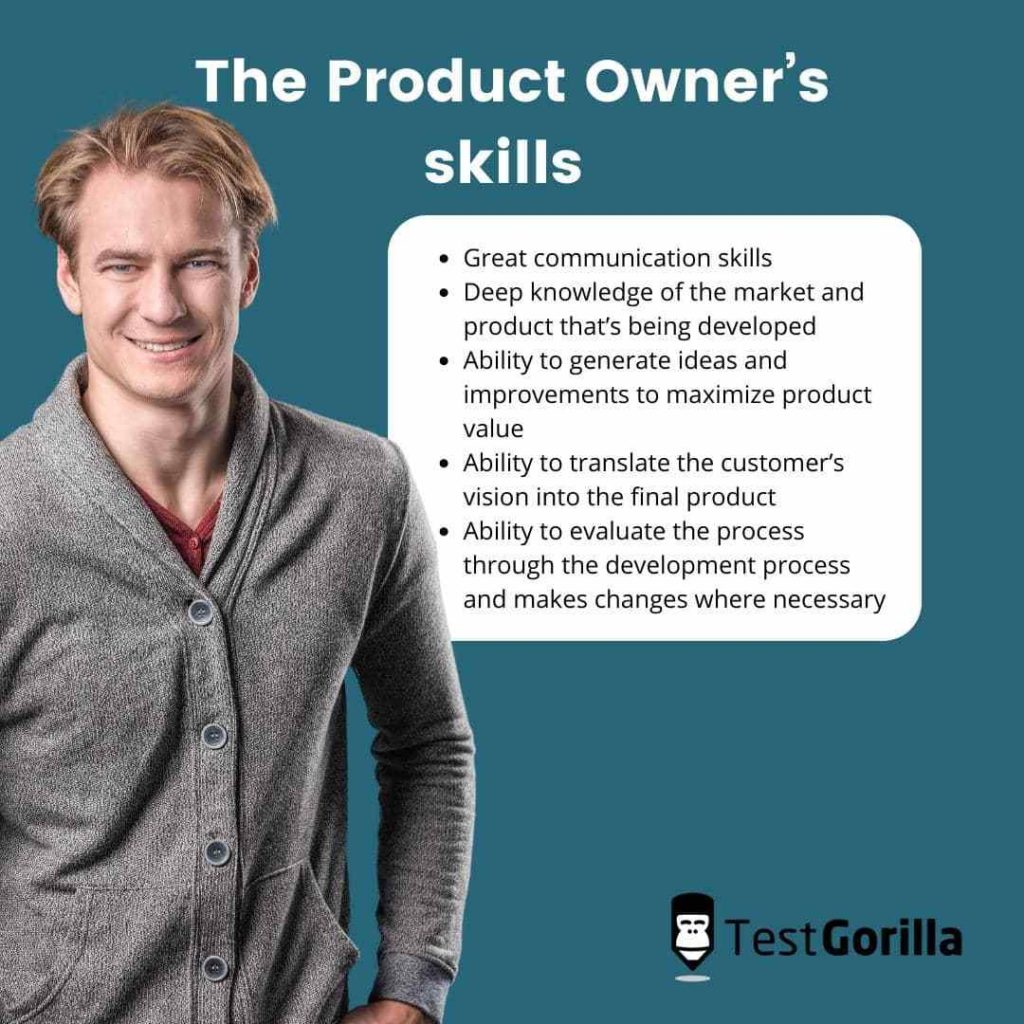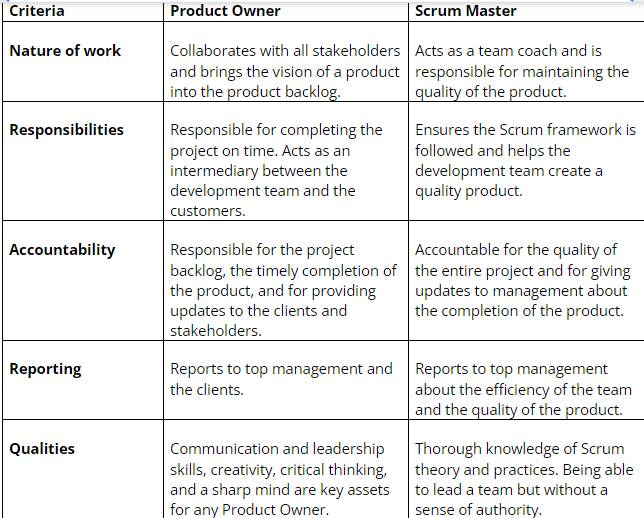In recent years, the Agile software methodology has increasingly become a staple in project management. Agile manages a project by breaking it up into smaller segments.
The methodology involves constant collaboration between stakeholders and team members, and it seeks continuous improvement during the software development process in order to achieve value effectively and efficiently.
Since Agile has helped software companies solve many issues, it’s become preferred over other methodologies.
The most widely used Agile development method is Scrum: a lightweight framework that breaks down complex software and development processes, by using iterative and incremental practices. It increases productivity and cuts down on time, making it a better solution than traditional “waterfall” processes.
The Scrum process is different from other Agile processes by having defined concepts, values, and practices.
Companies would hire professionals like Scrum Masters and Product Owners, who have deep knowledge and understanding of these core Scrum practices.
However, the roles of Scrum Master and Product Owner have often been confused with one another over the years.
While the two share similarities, each role is distinct and has unique responsibilities. Both the Scrum Master and the Product Owner are essential components of the Scrum team, and their different skill sets are vital for the overall success of a project. As a result, there has been a rising demand for both Scrum Masters and Product Owners in recent years.
So, should you hire a Scrum Master or a Product Owner?
This article will discuss the two roles, compare their skills and responsibilities, and what makes them different, and then it will help you decide whether you should hire one, the other, or both.
Table of contents
- Scrum Master vs. Product Owner: What’s the difference?
- The Scrum Master
- How can you hire a Scrum Master for your team?
- The Product Owner
- How can you hire a Product Owner for your team?
- Scrum Master vs. Product Owner: Skills comparison
- Can a Product Owner and a Scrum Master be the same person?
- Scrum Masters and Product Owners have overlapping but different roles
Scrum Master vs. Product Owner: What’s the difference?
While the Scrum Master and Product owner often interact with one another, their roles are unique, and each one performs different tasks. This separation gives the development team a clear picture of what needs to be done to make the development of a product quicker and more efficient.
Overall, the Scrum Master leads the Scrum development team and supports the Product Owner by constantly updating the Scrum team with relevant information.
The Product Owner, on the other hand, is in charge of the product backlog management and is accountable for maximizing the value of the product developed by the Scrum team.
The product backlog covers all the tasks that need to be accomplished during the project. The Product Owner ensures that the Scrum Master knows the product backlog and any changes applied to it.
In order to do this, the Product Owner constantly gathers feedback from all stakeholders and acts as a liaison with customers to understand the purpose of the product.
Once the product backlog has been finalized, the Scrum Master’s job is to bring the project to life. If any changes are made along the way, the Scrum Master will update the development team and the Product Owner.
Having characterized the two roles, let’s dive deeper into the nature of each so that you can decide what your needs are.
The Scrum Master
In this section, we’ll look into the Scrum Master’s job description, responsibilities, and skills, to bring you clarity and help you better understand the role.
The Scrum Master’s job description
The Scrum Master has in-depth knowledge of Scrum theory and practices. Their main job is to implement the Scrum framework within the development team and the organization as a whole.
They act as “servant leaders” by helping the Scrum Team and the Product Owner to understand Scrum. They promote a safe working environment and act as facilitators between the development team and the Product Owner.
The Scrum Master’s responsibilities
The main responsibilities of the Scrum Master are as follows:
Coach
The Scrum Master is responsible for making sure that both the development team and the Project Owner follow Scrum practices and principles. They see to it that the team moves on to the next step of the project development with enhanced performance.
Effective communicator
Having great communication skills ensures the proper dissemination of information between team members, the Project Owner, and different stakeholders. It also helps with team coaching and when explaining the Scrum framework.
Servant leader
The Scrum Master takes on the role of a servant leader. This means that, while they are in charge of the Scrum process, they should have an authoritative demeanor. Scrum Masters should help and collaborate with the team to get the work done efficiently.
Removes obstacles
The Scrum Master always tries to remove impediments that might hinder the development team’s workflow, such as unnecessary team meetings, hostile work environment, and complexity of procedures.
Facilitator
The Scrum Master always strives to improve the team’s work processes by acting as a facilitator.
The Scrum Master’s skills
A Scrum Master should have the following skills:
A deep understanding of Agile methodology and Scrum theory
Great communication skills
Natural mentoring skills to explain difficult concepts to team members
Organizational skills
Leadership skills
The best insights on HR and recruitment, delivered to your inbox.
Biweekly updates. No spam. Unsubscribe any time.
How can you hire a Scrum Master for your team?
The Scrum Master is responsible for facilitating Scrum within the organization, and requires certain skills in order to do so. Therefore, it’s essential to hire a qualified Scrum Master with the knowledge and skills needed for the job.
TestGorilla’s Scrum Master test will aid you in hiring the very best talent out there. The test evaluates candidates’ knowledge of Scrum principles, events, and values, and assesses their skills in applying the Scrum methodology in practice through real-life scenarios.
Candidates who pass TestGorilla’s Scrum Master Test will have a solid understanding of the above prerequisites and how they come together during the work of the Agile team.
For the best results, you can combine the Scrum Master test with other assessments to get a complete understanding of your candidates’ skills and strengths. For example, you could create an assessment of up to five skills tests and assess candidates’ cognitive abilities, personalities, culture add potential, or programming skills. You can also incorporate Scrum Master behavioral questions into your interview process.
The Product Owner
Here, we’ll look into the Product Owner’s job description, responsibilities, and skills, to give you a better understanding of the role and its specifics.
The Product Owner’s job description
The Product Owner is responsible for maximizing the product’s value created by the Scrum team. They define the product’s features and appearance and are also in charge of maintaining an effective product backlog.
The Product Owner represents the wants and needs of the organization’s clients and the many stakeholders involved in the product development. Having a good relationship with the stakeholders allows the Product Owner to incorporate their feedback into the product backlog, thus creating the highest valued product.
As with the Scrum Master, there’s some confusion between a Product Owner and a Product Manager. While the former manages the backlog and acts as a liaison between the customers and the development team, the latter has the wider role of supervising the whole production process, from its inception to its completion.
The Product Manager looks at the big picture of a company and what product they should focus on. They are also in charge of the product roadmap.
Having distinguished between the Product Owner and Manager, we can move on to the Product Owner’s responsibilities and skills.
The Product Owner’s responsibilities
The main responsibilities of the Product Owner are as follows:
Understanding the client’s needs and wants
The Product Owner communicates and collaborates with the stakeholders in order to comprehensively understand their requirements.
They translate these requirements to the development team and constantly go back and forth between developers and stakeholders to effectively accomplish the project.
Working with the Product Manager to create the perfect product roadmap
The Product Manager and the Product Owner work together to define the project’s goals, map user stories, determine the product’s features and priorities, and categorize tasks. Once these attributes have been clearly defined, the Product Owner can relay the information to the development team via the product backlog. Product management skills assessments can help you find product owners who understand the bigger picture, which sets them up for a better collaboration with project managers.
Keeping and maintaining an active product backlog
The primary concern of the Product Owner is the product backlog, where they prioritize items based on the project’s objectives.
The backlog is constantly changing and the Product Owner’s job is to update it and ensure everyone — stakeholders and developers — understands and follows these updates.
Supervising the development stages
The Product Owner spends a significant amount of time supervising the product development, including in the planning phase.
During this phase, the Product Owner again works with both the stakeholders and the development team to plan the steps and identify the process required for the next step in the development process.
Collaborating with the Scrum Master
The Product Owner and the Scrum Master work closely to ensure that the product’s development stays true to its original idea.
The Product Owner’s skills
A Product Owner should have the following skills:
Great communication skills
A deep knowledge of the market and product that’s being developed
The ability to generate ideas and improvements to maximize product value
The ability to translate the customer’s vision into the final product
The ability to evaluate the process through the development process and makes changes where necessary
How can you hire a Product Owner for your team?
The role of a Product Owner is indispensable in the Scrum team, and having a qualified Product Owner who understands user needs and how to prioritize them during the development process is a vital ingredient for any Agile organization.
TestGorilla’s Product Owner test will aid you in hiring the very best talent out there. The test assesses candidates’ knowledge of the Scrum framework, as well as their skills in managing product requirements and delivering the product on time.
Screening candidates with this test will help you find Product Owners with vast experience that can aid both new and experienced Scrum teams. Candidates that do well on this test will have a strong grasp of the Scrum framework, the product backlog, and managing stakeholders efficiently.
You can combine this test with other skills assessments to get a complete overview of your candidates’ strengths and weaknesses. For example, you could administer a Product Owner test in combination with a cognitive assessment, a personality and culture test, or a programming test.
Scrum Master vs. Product Owner: Skills comparison
The following are the main differences between the two roles.
Can a Product Owner and a Scrum Master be the same person?
Wouldn’t that be easy?
Unfortunately, the answer is no.
As we’ve seen, both the Product Owner and the Scrum Master have different roles. Both are full-time jobs that require focus, specific skills, and time to perform the job well, not to mention the fact that they undertake different activities that need to be managed.
If the Scrum Master acts as a Product Owner, they will not have the same access to customer feedback. Without knowing what your customers’ needs and wants are, your teams will be creating products that your customers might not like in the end.
Alternatively, if the Product Owner acts as a Scrum Master, their own responsibilities will become too broad, which might result in poor job performance. The Product Owner will want to finish a product by certain deadlines, which may be prioritized ahead of the product backlog and the development process.
Having one person take on the responsibilities of both roles might also affect team morale and cohesion, and, as a result, generate higher employee turnover.
All in all, the two roles need to remain separate for you to gain the maximum value from both, which in the end will result in a better product for your clients.
Scrum Masters and Product Owners have overlapping but different roles
As we have seen, Scrum Masters and Product Owners have overlapping, yet distinguished roles and responsibilities. Both are essential for the successful and efficient development of a product and are an integral part of any Scrum team.
The Scrum Master is responsible for the quality of the product by helping team members understand and adhere to Scrum practices and theory. The Product owner is responsible for the completion of the product by maintaining an efficient backlog and effective communication with clients and the development team.
Overall, you should hire both if you want to drive your business’ productivity and profitability. Use TestGorilla’s Product Owner test and Scrum Master test to find the right hires for your team.
You've scrolled this far
Why not try TestGorilla for free, and see what happens when you put skills first.


